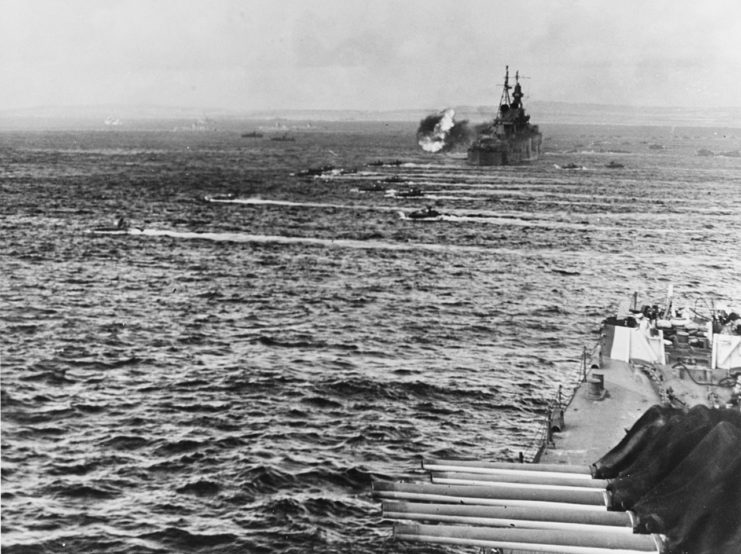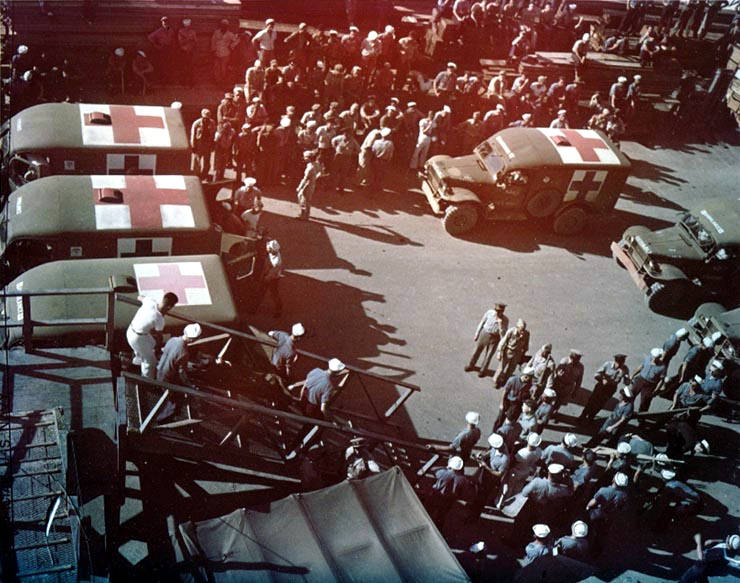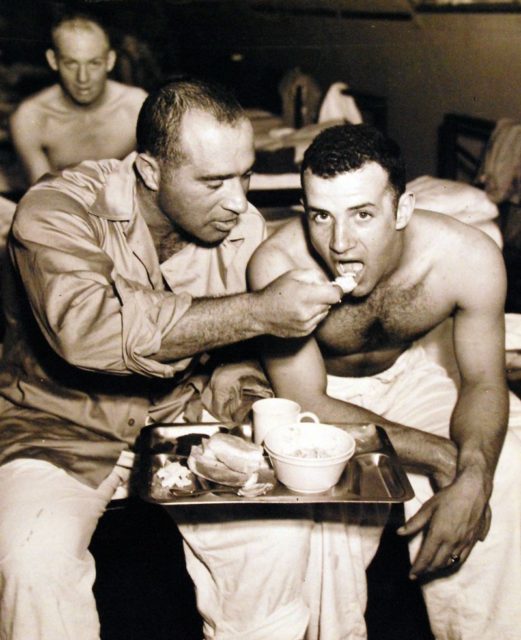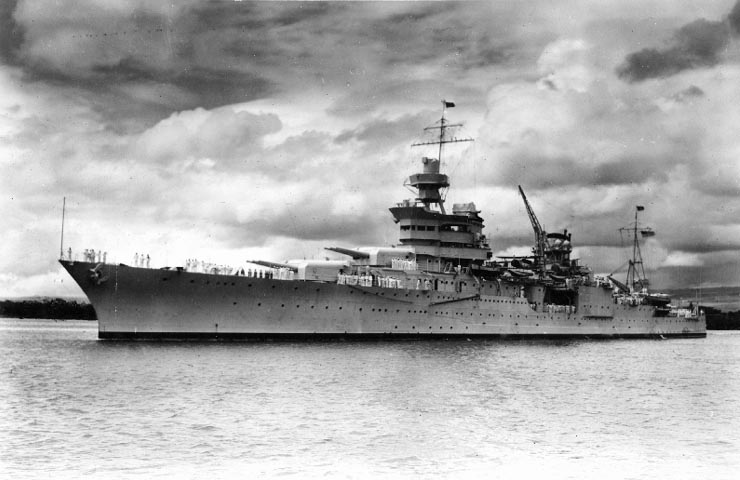The USS Indianapolis was a Portand-class heavy cruiser in the US Navy during World War II. It was sank by the Japanese after completing a historic secret mission. But the sinking of the ship was just the beginning of the terror for the surviving crew.
The ship had just completed a classified mission to Tinian Island where it delivered parts that were used to assemble the Little Boy atomic bomb. Little Boy would be dropped on Hiroshima by the Enola Gay just a few days later.
After delivering the parts, the Indianapolis set sail for the Philippines. They never reached their destination. Japanese submarine I-58 found the ship and torpedoed it. The Indianapolis sank in only 12 minutes.

300 of the 1195 crew members went down with the ship. The rest were left floating in the ocean 280 miles from land. They floated in the ocean for days waiting for rescue. Many began to die from exposure, exhaustion and dehydration.
Eventually, the sailors were found, not by rescuers but by oceanic whitetip sharks. Some of the sailors were attacked. The blood in the water from those first attacks attracted more sharks. It is the largest shark attack ever recorded.
After four days, a Navy pilot on patrol noticed an oil slick on the water. When he dove to investigate, he was shocked to see hundreds of sailors floating in the water and radioed for rescue crews to come save them.
More than 800 men escaped the shipwreck but only 317 were rescued from the water.
With the attacks on Hiroshima and Nagasaki happening so soon after the shipwreck and the surrender of the Japanese shortly after that, the sinking of the Indianapolis was overlooked by historians for decades.
In the 1990s, the public became interested in the story of the Indianapolis and a couple of deep sea expeditions took place to try and locate the wreck of the doomed ship. Both were unsuccessful.

In 2016, a Dr. Richard Hulver, a researcher with the Naval History and Heritage Command, noticed an incident report by the captain of the Indianapolis which mentioned passing a Naval landing craft just hours before the ship sank.
Hulver was able to determine which landing craft would have been in the vicinity of the Indianapolis at that time. He was then able to use the paths of the two ships to narrow in on a 600-square-mile area where the Indianapolis must have been sunk.
Billionaire Paul Allen funded an expedition using his research ship that has found the last resting places of many military vessels to locate the Indianapolis.

On August 19, 2017, Allen’s team found the Indianapolis 18,000 feet below the surface. It is one of the deepest shipwrecks to ever be found.
The location of the Indianapolis is considered a war grave and is not to be touched. It is a monument to the sacrifice made by its crew to bring an end to World War II.
Another Article From Us: Tuskegee Airmen Veteran, Theodore “Ted” Lumpkin Dies Aged 100
On December 20, 2018, the crew of the Indianapolis was awarded the Congressional Gold Medal – the highest civilian award in the United States.
